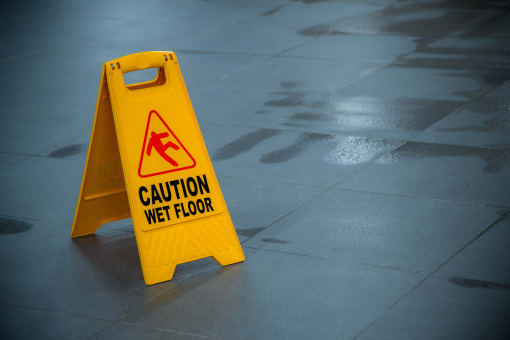Due Diligence, Not Negligence: Simple Steps to Keeping Your Condo Safe

Statistics collected by the Canadian Institute for Health Information show that as many as 162,222 slip-and-fall injuries occurred in 2020-21, with some 60 per cent of these requiring emergency room visits and hospitalization. Many of these accidents can lead to sprains, fractures, broken limbs and more serious consequences.
When these types of accidents occur on or around a condo property — and some 2 million Canadians live in condos — it is quite possible that an individual could bring legal action against the corporation. In fact, the Occupiers Liability Act requires that the board of the strata must take reasonable care to ensure people are safe on your premises.
We have put together a list of ten steps that your property manager or a designated individual should follow and monitor to keep your property safe. All these solutions and steps are closely linked but they will help protect your condo and the people who live and visit it:
- Ensure all walkways are clear of any obstacles. Regular inspections will find deficiencies such as wear and tear, as well as cracks and potholes in cement or tarmac, heaving due to roots growing under a pathway, misaligned and uneven paving stones, and pooling of water in these recesses from rainfall or melting ice and snow.2.
- Walkways and stairwells must always be well lit. Many walkways and passages to parking lots can be dim and walkers can’t always see tripping hazards. As part of your ongoing maintenance program, ensure that adequate lighting is in place, and that burnt out lights and defective switches are replaced promptly, especially in high traffic areas. Non-slip tape helps with traction, especially on stairs that can be slippery in rainy and snowy conditions.3.
- Snow is as Canadian as maple syrup. So, make sure that you have a proper snow removal plan in place, especially for those late-night storms when most people are sleeping. Simple things like keeping an eye on your weather app can pay off substantially. Slipping on ice is one of the most common sources of falls and trauma. Pathways should be cleared of snow and a de-icing agent — ideally pet and eco-friendly — should be used to prevent ice build-up and maintain a slip-free surface. Check your local bylaws, but keeping public use sidewalks clear is important too and should be top of your list when it comes to snow removal. Ensure that snow removal logs are maintained and kept up to date. These are vital in the event of a claim due to a slip and fall, and help to prove due diligence, and not negligence.4.
- Ensure spills are quickly cleaned up. Spills can take on many forms, and often include hazardous materials such as oil or other chemicals in parking areas. Use appropriate cleaning materials and ensure that signs are in place warning people walking in the affected area.5.
- Rainy periods and winter weather can mean wet floors in entrances, which adds to the slipping hazard. Keep these areas mopped regularly, but always utilize “wet floor” signage after a clean-up. Investigate installing mats that retain water for high traffic entrances as well as consider installing non-slip surfaces.6.
- Identify damaged walkways and ensure they are repaired as soon as possible. In the meantime, alert walkers to the hazard with brightly coloured cones or other signage.7.
- Inspect walkways and handrails to ensure all are in good order. If a handrail is not correctly secured it can fail, causing an individual to slip down a stairway or even worse, by falling off the stairway itself.8.
- Avoid using extension cords draped across a property, but if they must be used, ensure that they are properly covered or taped, ideally with a polyurethane pedestrian cable protector for high traffic areas. These come in interlocking sections if extra coverage is required.9.
- Inspect carpeting and rugs to ensure they are not loose, torn or wrinkled especially where they transition to other types of flooring or surfaces. Curled edges and folds are particularly problematic and risky. Gripping, double-sided carpet tape can prove useful in keeping carpeting in place and securely attached to the floor.10.
- Develop a process to encourage occupants to report hazards. If you see something, say something. It could be as simple as an email or text to the building manager or a suggestion box in the entrance. Some properties invite individuals to submit a photo of the problem.
WHAT TO DO IN THE EVENT OF AN INCIDENT?
Despite your best efforts, if a slip or fall does occur, assist the injured person in finding medical treatment. Call an ambulance if necessary. Record the names and contact information of any witnesses. Obtain and note detailed descriptions of the incident from the injured party and witnesses. Refer any discussions with the claimant to the property’s insurer.
It’s important that you never admit liability. Take photographs of the area where the incident occurred. If possible, photograph the footwear that the injured person was wearing. Document the incident. This may help to establish a defence for a claim presented later and help your insurer analyze the cause of the incident.
Report the incident to the corporation’s insurer as soon as possible, with the information you have. Investigate potential causes and take steps to prevent and/or respond better to similar future incidents.




